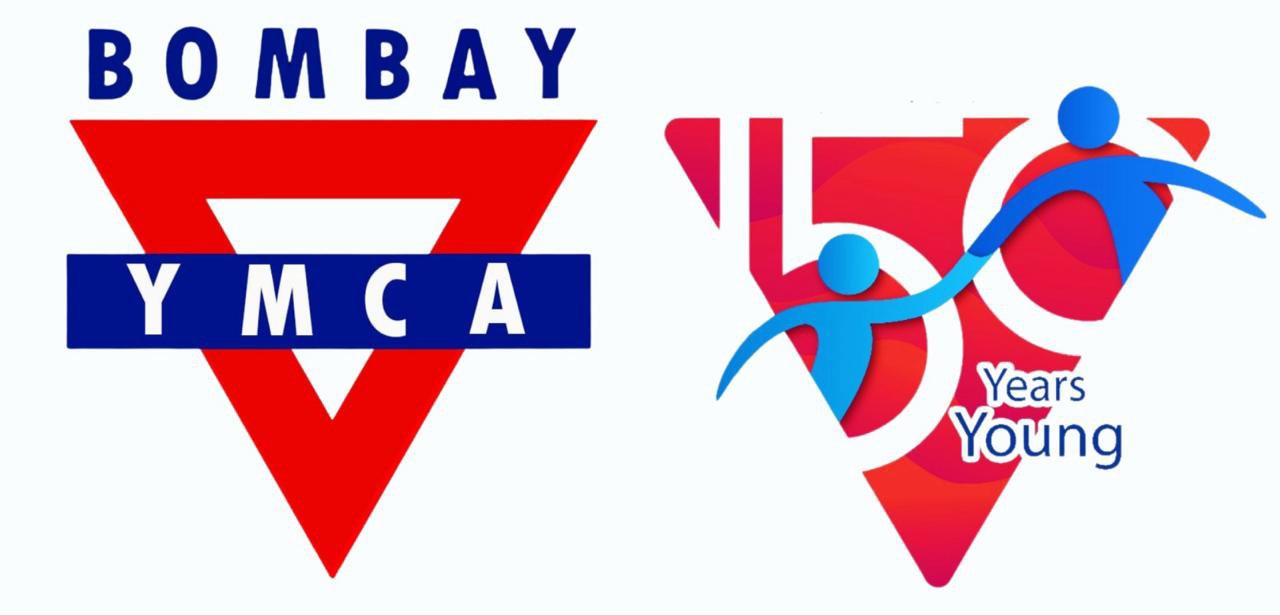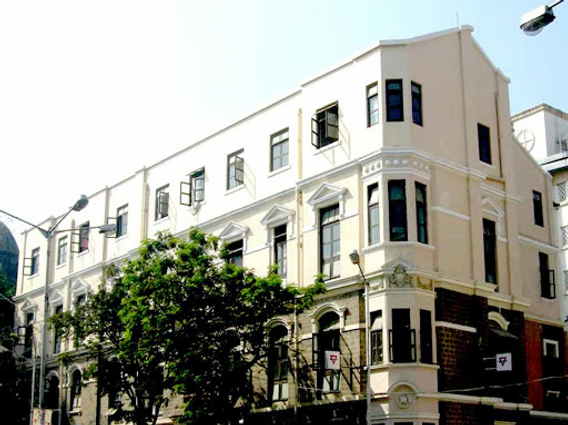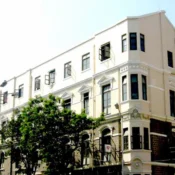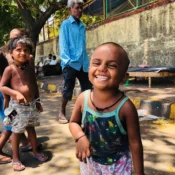The story of the Bombay Young Men’s Christian Association’s inception and journey
he Young Men’s Christian Association was founded in London, England, on June 6, 1844, in response to unhealthy social conditions arising in the big cities at the end of the Industrial Revolution (roughly 1750 to 1850). Growth of the railroads and centralization of commerce and industry brought many rural young men who needed jobs into cities like London. They worked 10 to 12 hours a day, six days a week. Far from home and family, these young men often lived in the workplace. They slept crowded into rooms over the company’s shop, a location thought to be safer than London’s tenements and streets. Outside the shop, things were bad—open sewers, pickpockets, thugs, beggars, drunks, lovers for hire and abandoned children running wild by the thousands.
The living conditions in Bombay in 1875 were similar to those in London in 1844. With the first textile mill coming up in 1854, Bombay had become the leading industrial city of India, and employment opportunities attracted British and Anglo-Indian youth, as well as rural youth from many parts of India, to Bombay in search of a fortune. The Bombay YMCA was established on April 25, 1875. At the close of a public meeting held at the Cowasjee Hall, Dhobi Talao, on April 25, 1875, and addressed by Rev. A. N. Somerville of Glasgow, the speaker said that he would like to see a YMCA established before he left India the next day. Those interested were asked to stay on after the meeting. After some discussion, a resolution was passed unanimously, and the Bombay YMCA was formally established.
A General Committee was elected during the first year. The first President was Henry Conder. The first activity was a weekly prayer meeting. At the close of the first year, there were 188 members on the roll. It is interesting to note that while the bulk of the membership was British, there were about 20 Indians in the first list.
On July 1, 1881, the YMCA dedicated the newly constructed Hall at Apollo Bunder to God and to the service of young men in Bombay, with prayers and thanksgiving. This was the first building of the Bombay YMCA.
Most of the extensive work of the association in Bombay during the first 30 years was based on rented buildings or private homes. The first YMCA Hostel in Bombay called the ‘Young Men’s Home’ was opened in Grant’s Building in July 1890 with 12 residents. The Board arranged to take on 99 years’ lease from 1904 a plot of land measuring 2250 sq. yards on the Wellington Lines Estate on Wodehouse Road. The opening ceremony of the building took place on September 25, 1906, at the hands of Governor Lamington, Governor of Bombay. The Wodehouse branch was renamed as Central branch in 1908 as most of the activities were Centred there and it was also the headquarters of Bombay YMCA from where the General Secretaries functioned. With the opening of the new building the headquarters of the Bombay YMCA was shifted from Apollo Bunder to the Central branch and remained there for the next 66 years, till it got shifted to the YMCA International House.
Work among the students in Bombay was started, under the College Department, in a rented building in Girgaon Road in 1896 under the leadership of Frank Anderson, the College Secretary. The well-stocked Reading Room was used daily by about 60 students. The program included public lectures, debates and magic lantern talks.
A plot of land 2,619 sq. yards in the area was acquired on Rebsch Street at Agripada on a 99-year lease in 1909 from the City Improvement Trust and construction of the building commenced. The building was opened on March 11, 1915, by Lord Willington, Governor of Bombay. In recognition of the services rendered by Sir Henry to the YMCA, the Branch was named ‘Procter Branch’ in 1915. The first sports activity that started at Apollo Bunder, in 1883, was Tennis. By adding cricket and football, the first Athletic Club of Bombay YMCA was opened for members who desired to play these games. The Athletic Club, which had been conducting sports and games activities for its members for a number of years, decided to organize the first Annual Sports meet for two days on 16 and 17 March 1905 covering 23 sports events. There were 180 entries for various sports. A Swimming Pool for the YMCA had been thought of in 1935. The Pool was dedicated by Rev. L. Wilkinson on May 6, 1967. The Official opening ceremony of the pool was held on October 12, 1968, with Air Marshall Arjun Singh, President, Swimming Pool Federation of India as the Chief Guest. In 1914 a plot of land 2,318 sq. yards situated at the corner of Club Back Road and Reynolds Road at Byculla was leased for a period of 99 years from the Improvement Trust. The building was ready in August 1915 and Lady Willingdon, the Governor’s wife inaugurated it in the presence of a large and distinguished gathering. YMCA’s special concern for the marginalized community in Bombay goes back to 1923 when Naigaum was identified for work among the poor and lower-middle-class Indian Christians. This later grew into a full-fledged community service among the industrial workers of all groups. The Social Service Department was created in 1925. The welfare work, started among the poor Indian Christians at Naigaum, was later thrown open to all the inhabitants irrespective of caste and creed. In order to establish rapport with the people by breaking down barriers of suspicion and strangeness, the YMCA opened a night school and also organized lantern lectures, entertainment programs and plays.The Byculla Branch building was pulled down in 1971 and a new one, the International House came to be erected in its place in 1973. The new building was dedicated on January 1, 1972, and inaugurated by Shri. Ali Yavar Jung, Governor of Maharashtra, on March 4, 1972.The building of the Andheri branch stands on a plot of land measuring 5000 sq. yards, given by the Maharashtra Housing Board in 1960, which also houses the Boys Home. The Andheri Branch was inaugurated on April 24, 1974.
The foundation stone of the Home was laid by Harish C. Mahindra, Chairman of the Home Committee on March 31, 1963. The Boys Home was opened on April 1, 1964, with three boys, each of eight years of age. On February 8, 1982, Bombay YMCA purchased a 4000 sq. meters plot of land in Sector 8 at Belapur Node. On May 19, 1983, they took possession of the plot.
This is the first YMCA set up outside the city limits. The branch was inaugurated by Shri. Brahmananda Reddy, Governor of Maharashtra on April 30, 1988. To grapple with the situation of the street children in Bombay, the Bombay YMCA launched a program for the upliftment of the street children. Prof. Anant Namjoshi, Chairman of the YMCA-NSCC India joint social service project, inaugurated the project on April 20, 1991, at the Khar Danda Centre. The first Camp was held at Junnar in October 1975. Thirty-eight boys from Bombay Schools attended this leadership development camp which became a role model for many such camps which have become a regular feature. After nearly two decades of searching for a campsite that could be used around the year, Bombay YMCA finally decided to buy a site 150 miles away from Bombay. A 37 acres campsite at Khand- Nilshi village, Vadagaon Taluka in Maval in Pune District was purchased. The foundation stone at the campsite was laid on September 12, 1999. Camp Lakeside, Nilshi, was opened for activities on August 15, 2003.





This is the best tour on the east coast! It was amazing how many places we visited and what great memories we made!
This was not our first time going to here. It is a great place to shop not too far from New York. We took the bus from Port Authority and traveled through the countryside to get there.
We always stay at here when in town. The location is great, staff is wonderful and we love the overall feel. Beautiful view from the here.